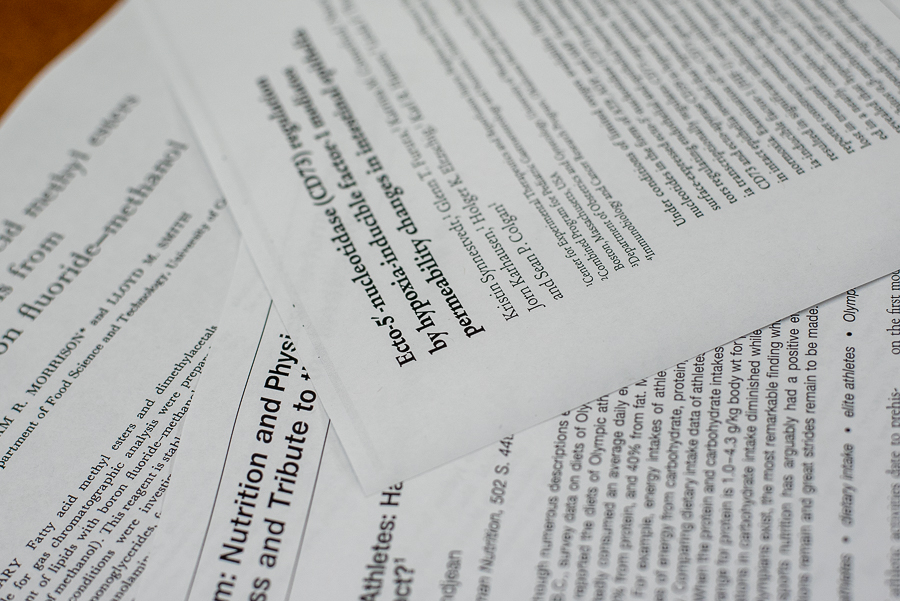
UC Davis offers many outlets for STEM students to creatively publish, showcase their work
Students at UC Davis may remember the old high school days when English teachers pounded the restrictive five-paragraph essay format into their brains. As STEM majors enter college, there are various clubs and scientific journals available as platforms to publish research and document experiences far beyond the limiting five-paragraph rule.
The Aggie Transcript, The Narrative Pre-Health Club, Explorations, Prized Writing and UC Davis Health Student Review are just a few of the avenues students can pursue. The Aggie Transcript and The Narrative Pre-Health Club accept submissions in media forms other than writing, such as art, photography and video.
“Whether undergraduates choose to stay in academia or not, writing is involved in most careers, as is project and time management,” said Lauren Fink, neuroscience Ph.D. student and editor-in-chief of Explorations: The UC Davis Undergraduate Research Journal.
Writing in scientific fields has become a crucial skill in today’s society. With the rapid advancement of technology and research, writers must be able to effectively convey their ideas to both experts and the general public.
“Publishing is valuable evidence to employers or future graduate schools of a student’s ability to write and to carry a project through to a conclusion,” Fink said.
Large class and laboratory sizes make it difficult for students to apply their knowledge to current events or share their information to others in a more original way. Showcasing writing at a university level shows initiative to learn and grow.
“Writing is a way to express yourself and [students] have the opportunity to express what they learned,” said Nicole Strossman, fourth-year biochemistry and molecular biology major and senior editor of The Aggie Transcript.
The Aggie Transcript is a unique scientific journal because it is student-run. The editors take the time to work with students, helping them to edit their submissions. The goal is to produce high-quality pieces of writing that allow students to retain a sense of originality in their submissions.
Published work from this journal covers topics in health and medicine, genetics, case studies in biology and even literature reviews of scientific papers.
The most recent article published was a case report on Tourette Syndrome in the health and medicine category.
“We have two faculty advisors that provide their input from a writing perspective and science perspective: Dr. Sean Burgess of the Department of Molecular and Cell Biology and Dr. Katie Roger of the University Writing Program (UWP) department,” Strossman said.
The Narrative Pre-Health Club (NPH) also consists of a journal committee which publishes written pieces about reflections or narratives on pre-health experiences. This includes personal stories about volunteer experiences, classes, clinical work or any subjective topic relating to the journey of a pre-health student.
“We feel that analyzing and sharing our stories at a deeper level not only allows us to better understand ourselves, but also to identify the person we each aspire to be as future health professionals,” said Murtaza Khan, co-founder of NPH.
NPH is distinctive from other journals on campus because it allows students to appreciate why they are pursuing a college education, and a career in the health field specifically.
“[Think back to] the time you used to visit your mother in the hospital as she fought cancer. That one class that piqued your interest in the workings of the nervous system. The many times you feel burned out by the daily struggle of […] classes, to pursue a seemingly distant dream, but keep on persevering nonetheless,” Khan said. “We all have these experiences […] I think it’s important that we sit down and reflect on them to pinpoint exactly how they’ve shaped us.”
A scientific journal that exclusively publishes undergraduate research is Explorations. In order to submit a piece of writing, a student must have a faculty sponsor, who references a few potential experts in the paper’s field. These experts are then asked to review the submission with the help of the journal’s editorial board.
“We have published articles from a variety of majors such as art history, sociology, psychology, engineering, math, sciences, english and agriculture,” said Fink. “We hope that our journal reflects the range of thought expressed on our campus and certainly aim to have the research published in Explorations come from as many different disciplines as possible.”
If students are looking to publish research or writing from a class, UC Davis’ UWP has developed Prized Writing. Expository writing entries must have been written as an undergraduate student in concurrence with taking a university course. Selected submissions are published and featured in the Prized Writing book, sold at the university book store.
Scientific and student-run journals based at the UC Davis medical school have year-round opportunities to apply to their editorial staff.
“Just like publishing is a good experience for an undergraduate, learning what goes into editing and publishing an academic journal is a great opportunity for students,” Fink said.
The journals on campus continuously grow as the number of submissions increase every quarter. Both The Aggie Transcript and NPH are seeking to publish their first hard-copy journals with selected published articles.
Students who decide to publish their work each get to advantageously network their ideas early on.
“[Publishing research is] also good for other undergraduate students to see what their peers are doing,” Strossman said.
Staying informed and discussing new and current ideas in the varying scientific fields can only help students in their future education and careers.
Written by: Shivani Kamal – science@theaggie.org




